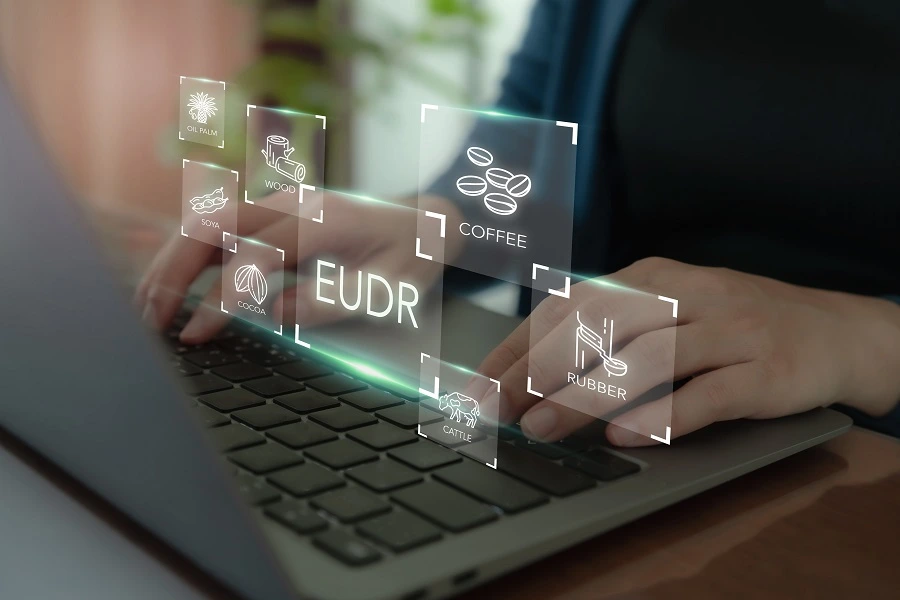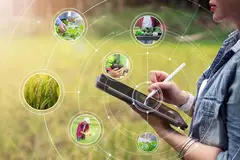IFT’s traceability tool overcomes F&B digital divide with “practical and accessible” data sharing
Key takeaways
- IFT’s Traceability Driver is an open-source tool for bridging digital systems and improving data sharing across food supply chains.
- The tool addresses challenges in traceability, particularly in seafood, by allowing digital interoperability and supporting compliance with global data standards.
- Traceability is evolving beyond food safety to verify sustainability and improve consumer confidence in product claims.
The F&B industry faces rising demands for transparency, sustainability, safety, and ethical sourcing, making effective traceability systems more critical than ever. However, many companies grapple with the challenge of different digital systems being unable to communicate with each other.
The Institute of Food Technologists’ (IFT) Global Food Traceability Center (GFTC) in Chicago, US, has launched its Traceability Driver as an “affordable bridge” between systems to overcome this digital divide. The open-source tool allows data to be shared seamlessly across systems, such as seafood imports, which often face criticism over “insufficient” traceability.
The tool automatically converts data into standardized formats that can be shared forward interoperably. It was initially developed in response to the growing pressures on the seafood industry to improve traceability. IFT says the tool can be installed locally, giving companies complete control over their data.
GFTC is a technical advisor to the US FDA on the Food Safety Modernization Act (FSMA), leading pilots and industry engagement to inform regulatory approaches. The center is a co-convener of the Global Dialogue on Seafood Traceability (GDST) and has led the creation and ongoing evolution of the “first global standard for interoperable seafood traceability.”

Food Ingredients First speaks with Blake Harris, managing director of IFT’s GFTC, to explore how the tool helps companies overcome barriers to digital food traceability, and how traceability goals are expanding beyond food safety to support environmental performance and enhance consumer confidence in product claims.
What is the current state of traceability adoption in the global F&B sector, and where are the most significant gaps?
Harris: Traceability has been part of the F&B industry for decades, but we’re in the midst of a major shift — from tracking products within individual facilities to enabling end-to-end, digital, and interoperable traceability across entire supply chains. That means being able to follow a product and its inputs from origin to final distribution. This transformation requires digital systems that can collect and exchange data across organizations. It is being driven by growing regulatory requirements and market expectations around climate, labor, and responsible sourcing, all of which are increasingly embedded in procurement decisions.
The biggest gaps today are in moving from analog or paper-based recordkeeping to digital systems and achieving interoperability between existing digital systems. Even when companies digitize their data, it doesn’t mean their systems can easily communicate with those used by their suppliers or customers, limiting the usefulness of that data. Historically, the solution was to either require all suppliers to use a single mandated system — an expensive and impractical approach — or to build one-off integrations, which are costly and time-consuming.
Using existing data standards, the Traceability Driver replaces those independent custom integrations with a scalable, affordable bridge between systems. This approach allows suppliers to use the systems of their choosing while still being able to share data seamlessly with their customers. However, to fully leverage tools like this, regulatory and industry traceability requirements must be grounded in event-based frameworks and common data standards to guide consistent data collection and sharing.
 The Traceability Driver embeds data standards knowledge within an open-source tool, reducing time spent on research and interpretation, says Harris.
The Traceability Driver embeds data standards knowledge within an open-source tool, reducing time spent on research and interpretation, says Harris.
How do you see the Traceability Driver changing how food manufacturers and suppliers handle global data standardization and compliance?
Harris: Across the supply chain, companies use in-house IT systems or commercially available software solutions to manage product tracking. The people responsible for maintaining these systems are primarily the ones who must understand how the data collected in these software systems relates to data standards and how that information can be shared with other systems.
The Traceability Driver supports these roles by embedding the knowledge of data standards directly within an open-source tool. This means staff can spend less time researching and interpreting pages of standards documentation to understand how it applies to their software.
In practice, this can lead to major efficiency gains — our case study with [agritech company] Koltiva showed a 60% reduction in the time they had estimated to pass the GDST’s Capability Test. This automated assessment verifies whether a software system has implemented the requirements of the GDST traceability standard and is therefore interoperable with any other system that has also passed.
Regarding digital transformation, how does the Traceability Driver lower the barrier to entry for smaller companies?
Harris: The Traceability Driver was built to support digital-to-digital interoperability, so for smaller companies already collecting data digitally, it helps take the next step — making that data usable beyond their own systems.
A tremendous amount of creative and innovative work is happening across the tech sector to support niche use cases in the F&B industry. Most of these solutions are designed with a focus on usability and meeting the needs of their direct customers. However, they don’t always consider how their technology or the data it gathers will interact with the broader systems used throughout the supply chain.
The Traceability Driver helps bridge that gap by translating the data those systems collect into the requirements of global data standards and providing a prebuilt API for sharing that data forward. This reduces the system-wide costs of achieving digital interoperability and the individual costs smaller companies face when meeting traceability and compliance expectations.
You’ve worked with the Indonesian government on national seafood traceability. What lessons from that experience shaped the design of this new tool?
Harris: As an original co-convener with the World Wildlife Fund, we’ve supported the implementation of the GDST Standard since its inception — a role that has become increasingly important as pressures on the seafood industry around traceability continue to intensify year after year. Like other food systems, the need for scalable resources to support best practice traceability implementation has grown significantly.
Earlier this year, the Indonesian government announced that it would align its national traceability system with the GDST, which tipped the scales. It made clear that we needed new, creative ways to efficiently support a large number of implementers. That realization, along with several other initiatives in the seafood space, directly shaped the design of the Traceability Driver as an open-source, scalable resource that could help digital systems become interoperable more easily.
The response since launch has been incredible. Within two weeks of launching the case study, nearly 100 individuals have downloaded the Traceability Driver from our repository, proof that there’s a real appetite across the industry for practical, accessible tools that make digital traceability easier to implement.
 Regulations like the EUDR depend on traceability to verify sustainability, legality, and ethical sourcing requirements.
Regulations like the EUDR depend on traceability to verify sustainability, legality, and ethical sourcing requirements.
Beyond seafood, which sectors can benefit most from adopting this tool?
Harris: Most, if not all, major food and agriculture sectors are facing growing pressure to improve traceability from regulators and risk management priorities. Some are already taking steps along the path paved by the seafood industry by GDST toward setting up digital interoperable traceability frameworks. For example, initiatives like the Global Traceability Framework for Beef and Leather are aligning stakeholders around shared approaches to data standards.
These frameworks enable scalable, open-source tools like the Traceability Driver to deliver real impact. When these frameworks are in place, adapting the technology to the context of other commodities is a relatively low lift, making it possible for sectors like dairy, beef, or produce to benefit just as quickly as seafood has.
That said, this tool is not a silver bullet — it’s one piece of the puzzle to make digital interoperability practical and accessible. We’re exploring concepts for additional tools to strengthen interoperability across systems and to help companies still relying on paper or analog methods connect to the digital traceability ecosystem.
What role do you expect traceability to play beyond food safety in the future?
Harris: We’re already seeing traceability being used far beyond food safety. Regulations like the EU Deforestation Regulation (EUDR), the Corporate Sustainability Due Diligence Directive, and the Seafood Import Monitoring Program all depend on traceability to verify sustainability, legality, and ethical sourcing requirements.
You don’t do traceability for the sake of traceability — it’s always in service of a use case. While food safety has traditionally been the driver, traceability is now being leveraged to support a wide range of goals, from verifying environmental performance and human rights compliance to strengthening consumer confidence in product claims. As more use cases emerge through industry-led initiatives or regulatory demands, digital interoperability across systems will be essential to making traceability data meaningful and usable for multiple purposes.















